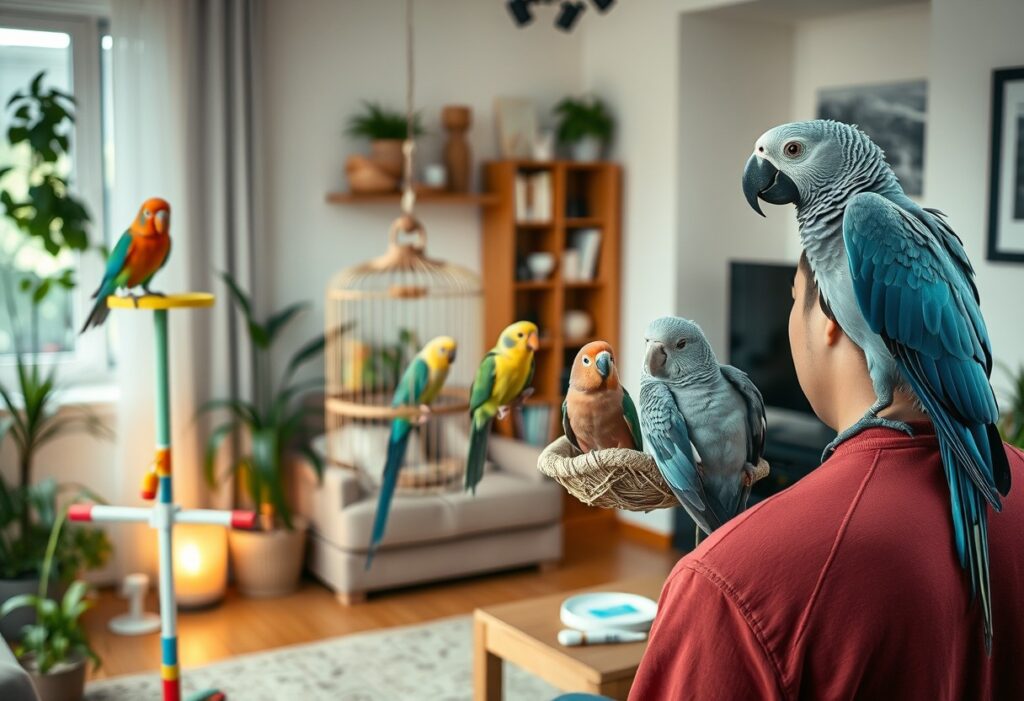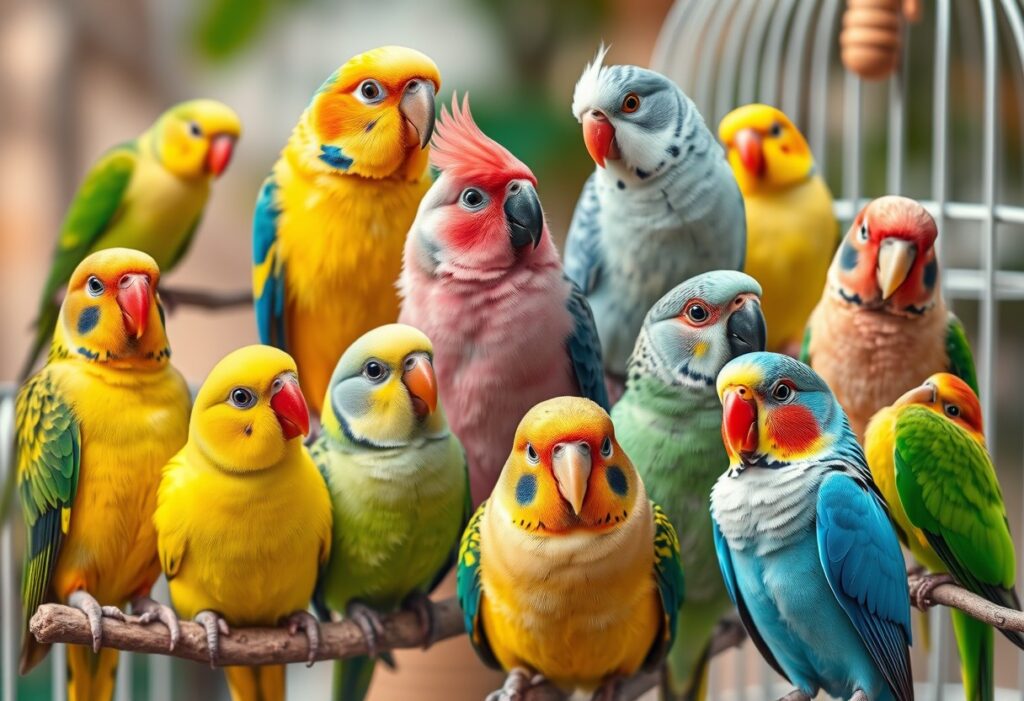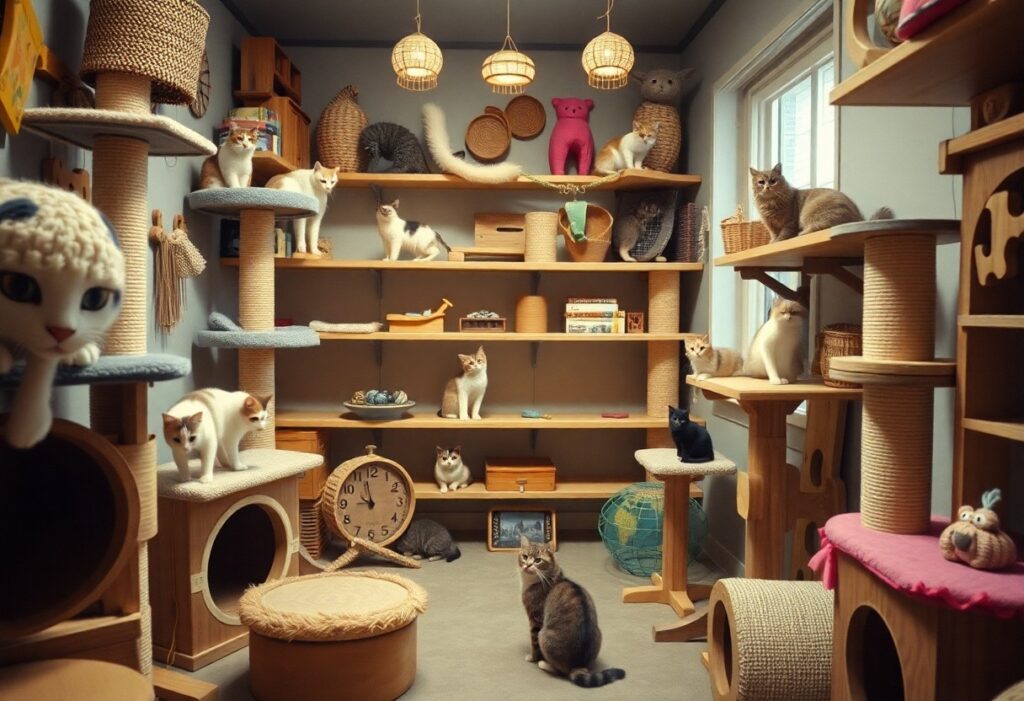Cockatiels are among the best companions for apartment dwellers, thanks to their friendly personalities and relatively manageable size. Choosing the right pet bird can greatly enhance your living experience, especially in smaller spaces. In this blog post, you’ll discover the top five pet bird breeds that not only thrive in apartment environments but also bring joy and companionship to your life. Whether you’re a seasoned bird owner or considering adopting your first feathered friend, these breeds are perfect for you and your home.
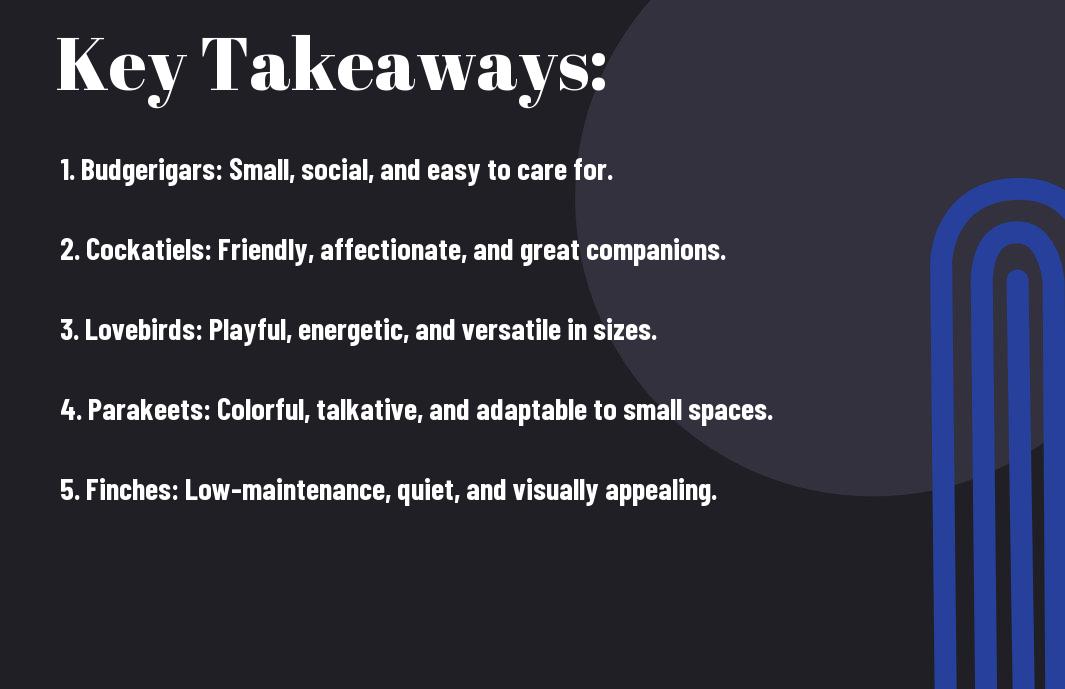
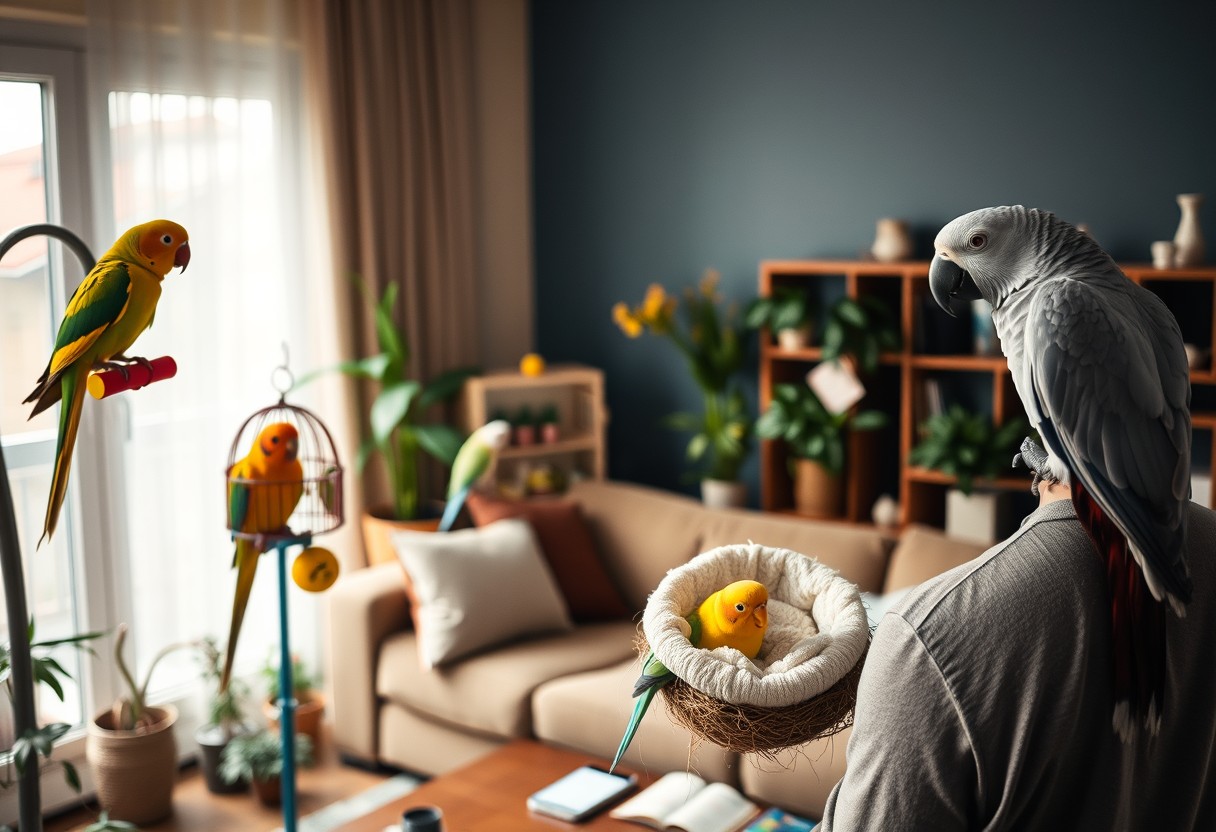
Why Choose Pet Birds for Apartments?
Apartments can sometimes feel limited, especially when it comes to finding the right pet. If you’re living in a smaller space, you may be concerned about keeping a pet that requires more room to roam. However, pet birds can offer a delightful and manageable option for apartment living. They bring joy, companionship, and colorful energy to your home without needing vast amounts of space. Moreover, many bird species are remarkably adaptable, making them perfect for an apartment lifestyle.
Space Considerations
On average, most pet birds, particularly smaller breeds like budgerigars or canaries, don’t require extensive living areas. You can dedicate a specific spot in your home for a birdcage, and even a corner of a room can work wonderfully with the right setup. Just be sure to choose a cage that fits comfortably in your space but also allows your feathered friend ample room to move around and stretch its wings. Investing in vertical space with perches and toys can also help optimize your bird’s living environment.
On top of that, you can integrate social interaction and time out of the cage into your daily routine without worrying about significant spatial constraints. Activities such as letting your bird fly in a safe room, training them, or simply having them out on your shoulder will create enriching experiences for both you and your pet.
Noise Levels
Noise levels are a critical factor to consider when choosing a pet for apartment living. Noise can often be a concern for residents living in close quarters. Noise can range from ambient chirping to enthusiastic squawking, depending on the bird species. If you chose a quieter breed, such as a cockatiel or finch, you can enjoy a lively pet without disturbing your neighbors.
The level of noise your bird will produce greatly affects your living environment. Smaller birds tend to be less noisy compared to larger species like parrots, which can vocalize loudly and even mimic sounds. However, many bird owners find the soft chirps of smaller breeds like canaries or lovebirds to be comforting rather than annoying. Always keep in mind that individual birds may have their own personalities, and factors like boredom or lack of social interaction can lead to increased vocalizations. Adopting a bird that matches your tolerance for noise will ensure a harmonious apartment experience.
Top 5 Pet Bird Breeds for Apartment Living
Now that you’re considering adding a feathered friend to your apartment, it’s crucial to know which breeds will adapt best to smaller living spaces. Each of these bird breeds not only brings joy and companionship but also requires relatively less space and can be easily catered to your lifestyle. Let’s explore the top five pet bird breeds that are perfect for apartment living.
Budgerigar (Budgie)
With their vibrant colors and cheerful personalities, Budgerigars, commonly known as Budgies, are an excellent choice for apartment dwellers. They are small, typically around 7 inches long, making them highly suitable for confined spaces. Budgies are also relatively quiet compared to other birds, which is a significant plus for any neighbor-conscious resident.
These social creatures thrive on interaction, so having a couple of Budgies is a great way to keep them entertained without taking up much space. Make sure to provide them with a comfortable cage that offers enough room for perches and toys, and you’ll have delightful companions that will brighten your home.
Cockatiel
For those looking for a slightly larger bird, Cockatiels are an ideal option. They are affectionate and known for their charming whistles and calls, bringing a warm atmosphere to your living space. Typically measuring around 12 to 14 inches, these birds need a bit more room than Budgies but can still adapt well to apartment life with the right environment.
Cockatiels generally enjoy interacting with their owners and can become quite bonded to you, often mimicking sounds or even simple phrases. Providing them with a spacious cage, along with out-of-cage time for socializing and exercise, will ensure they remain happy and healthy.
Budgerigar, or Budgie for short, has the added advantage of being *affordable and easy to care for*. They enjoy social interaction, but their maintenance is low compared to other birds, which helps you manage your lifestyle effortlessly.
Parakeet
Cockatiel birds are often confused with Parakeets, but they are distinct species with unique qualities. Parakeets are generally smaller and come in various beautiful colors, making them a wonderful addition to your apartment. They are sociable beings that enjoy chatter and companionship, adding a lively vibe to your home. Their small size, usually around 7 to 10 inches, makes them suitable for living in tighter spaces.
Many enjoy the company of other birds as well, so keeping a pair can provide them with the mental stimulation they need, especially if you’re away from home during the day.
Living with Parakeets can be a joyous experience as they are known for their playful nature and curiosity. A secure cage, paired with sufficient interaction and stimulation, will help them thrive in an apartment setting.
Lovebird
Budgerigar enthusiasts might also want to consider Lovebirds. These small but affectionate birds are typically around 5 to 7 inches tall and are known for their incredible bond with their owners. Their playful antics and adorable nature will surely endear you to them in no time. However, you should be aware that Lovebirds can sometimes be territorial and may require gentle introductions if you have other birds at home.
Providing them with toys and ample interaction throughout the day will help keep them engaged, making them a perfect apartment companion.
Finch
Bird lovers seeking a more serene experience might enjoy the company of Finches. One of the quieter options in the bird world, Finches thrive in a warm, social environment yet don’t require as much hands-on interaction as other varieties. They are small, often measuring around 4 to 5 inches, allowing them to fit comfortably in your apartment without much hassle.
Finches are delightful to observe as they flit around their cage, chirping softly and hanging out together in groups. This makes them a perfect choice if you desire an engaging pet without the stress of too much interaction.
Plus, adding Finches to your apartment can bring vibrant life and color without disrupting your daily routine. They require relatively low maintenance and are quite hardy, making them an ideal choice for novice bird owners seeking a more peaceful pet.
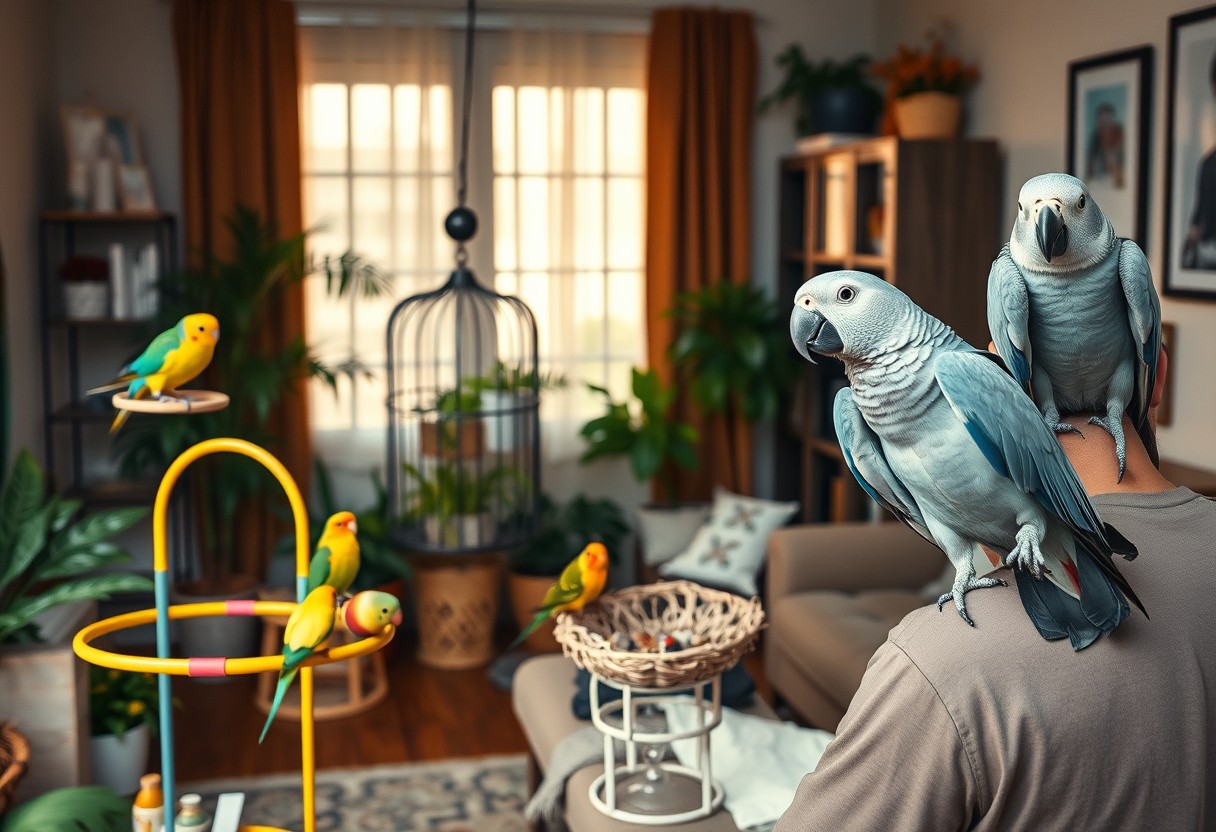
Care Tips for Apartment Pet Birds
Keep your pet bird happy and healthy in your apartment by ensuring you understand their specific needs. Here are a few vital care tips to consider:
- Choose the right cage size and design.
- Provide a balanced diet to promote overall health.
- Ensure daily socialization and interaction to avoid loneliness.
- Spell out safety measures to protect your feathered friends.
- Monitor their environment for any hazards.
Cage Selection and Placement
Any bird owner knows that the right cage selection is crucial for your pet’s happiness. Consider the bird’s size and activity level when choosing a cage, as it should allow enough space for your feathered friend to move freely and spread their wings. Look for a well-ventilated, spacious cage that prevents your bird from feeling cramped. Remember that cage placement is equally important; avoid placing the cage in drafty areas or where temperatures fluctuate.
It’s best to select a quiet corner in your apartment, free from direct sunlight and off the ground to ensure a sense of security. Additionally, avoid placing the cage near windows where your bird might feel threatened by outside noises or other animals. This will help create a safe, happy environment for your pet bird.
Diet and Nutrition
Cage birds require a well-rounded diet to remain healthy and vibrant. Your bird’s diet should primarily consist of high-quality pellets specifically formulated for their species, supplemented with fresh fruits and vegetables. Avoid offering excessive seeds, as they can lead to obesity and health issues. Social birds, such as parakeets or cockatiels, appreciate variety, so remember to introduce new foods gradually.
Placement of food and water dishes should be done thoughtfully; they should be out of reach of seeds and droppings but easily accessible. Your bird’s well-being heavily depends on their diet, so make sure you observe their eating habits and adjust accordingly.
Socialization and Interaction
An important aspect of caring for your pet bird in an apartment is providing adequate socialization and interaction. Birds are incredibly social creatures that thrive on companionship. Make it a point to spend time talking to and handling your bird daily, as lack of interaction can lead to behavioral issues and stress.
Engaging your bird with toys and activities can also promote a healthy environment. Regularly change out toys and introduce new ones to stimulate their natural instincts and prevent boredom. In order to encourage proper interaction, be patient and consistent in your approach, allowing your bird to become accustomed to your presence and handling.
Interaction with your bird can create a unique bond that contributes significantly to its emotional well-being. Always ensure that any interaction you provide is safe and positive, as your approach can deeply affect how your bird perceives you and its surroundings.
Summing up
From above, it’s clear that selecting the right pet bird breed for your apartment involves understanding both your living space and the specific needs of each bird. The top five breeds highlighted—Budgerigars, Cockatiels, Lovebirds, Finches, and Parakeets—are not only well-suited for apartment living due to their size and manageable noise levels but also offer unique personalities and social behaviors that can enrich your life. Your choice should reflect both your lifestyle and the commitment you are willing to make towards their care and well-being.
As you ponder the right feathered companion, remember that each breed comes with unique requirements for socialization, space, and environmental enrichment. By taking the time to educate yourself about your future pet, you can create a joyful and fulfilling environment for both you and your bird. Ultimately, welcoming one of these top apartment-friendly bird breeds into your home can lead to a rewarding companionship that fills your days with cheer and laughter.
FAQ: Top 5 Pet Bird Breeds for Apartments
Q: What are the best pet bird breeds that can thrive in an apartment setting?
A: When choosing a pet bird for an apartment, it’s necessary to consider breeds that are known for their smaller size, quieter demeanor, and adaptability to limited space. The top five breeds that are recommended for apartment living include:
1. **Budgerigar (Budgie)**: These small, social birds are friendly and easy to care for. They enjoy interaction and can be trained to talk.
2. **Cockatiel**: Known for their calm nature, cockatiels are affectionate and can learn to whistle tunes, making them delightful companions.
3. **Lovebird**: These small parrots are playful and sociable. They thrive on interaction, whether with their owners or other birds in the household.
4. **Parakeet**: Similar to budgies, parakeets are colorful, vocal, and sociable, and they require less space than larger bird breeds.
5. **Pionus Parrot**: This medium-sized parrot is known for being quieter compared to other breeds, making it suitable for apartment living. They are gentle and intelligent, creating a wonderful bond with their owners.
Q: How much space do I need for a pet bird in my apartment?
A: The amount of space required for a pet bird varies by breed, but generally, a larger cage is better, especially for social birds that require room to move around. For most small breeds like budgies and cockatiels, a cage with dimensions of at least 18 x 18 x 24 inches is recommended. It’s also critical to provide ample time outside the cage for exercise and socialization. Make sure to select a location that is safe and free from hazards. Additionally, bird-proof the area by removing toxic plants, securing windows and other openings, and minimizing access to small objects that could be ingested.
Q: Are pet birds noisy, and how can I minimize noise in a small apartment?
A: The noise levels of pet birds can vary significantly by breed. While some birds are known for their vocalizations, others are relatively quiet. For example, budgies and lovebirds can be chatty but typically do not scream loudly, while cockatiels may whistle melodically. To minimize noise, consider the following tips:
– Choose a quieter breed for apartment living, such as a Pionus Parrot.
– Establish a consistent daily routine that includes periods of interaction and quiet time.
– Provide plenty of toys and mental stimulation to keep your bird occupied, reducing the frequency of loud vocalizations.
– Socialize your pet regularly to lessen the likelihood of boredom-induced noise.
Bear in mind, regular interaction with your bird can often lead to more content and quieter pets.
